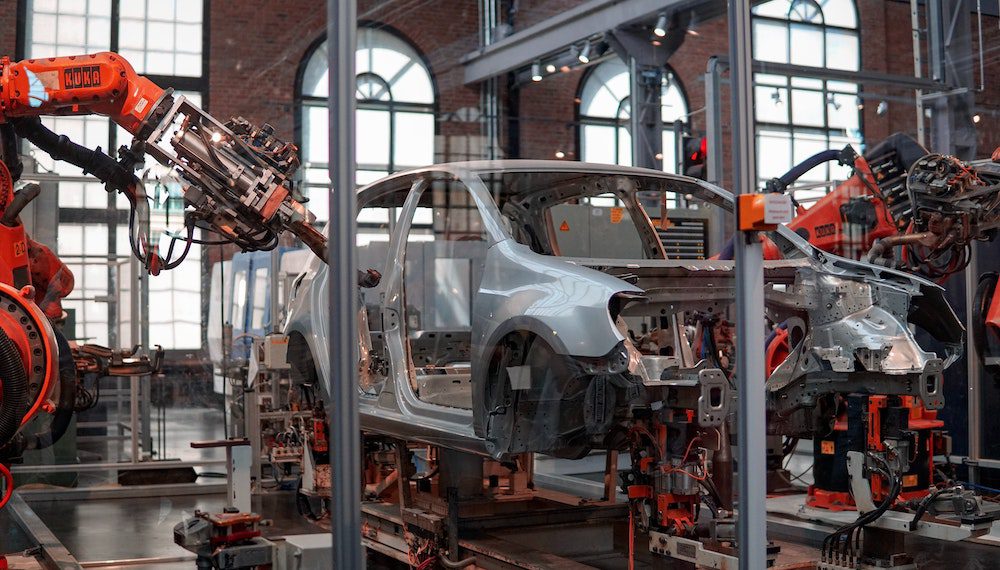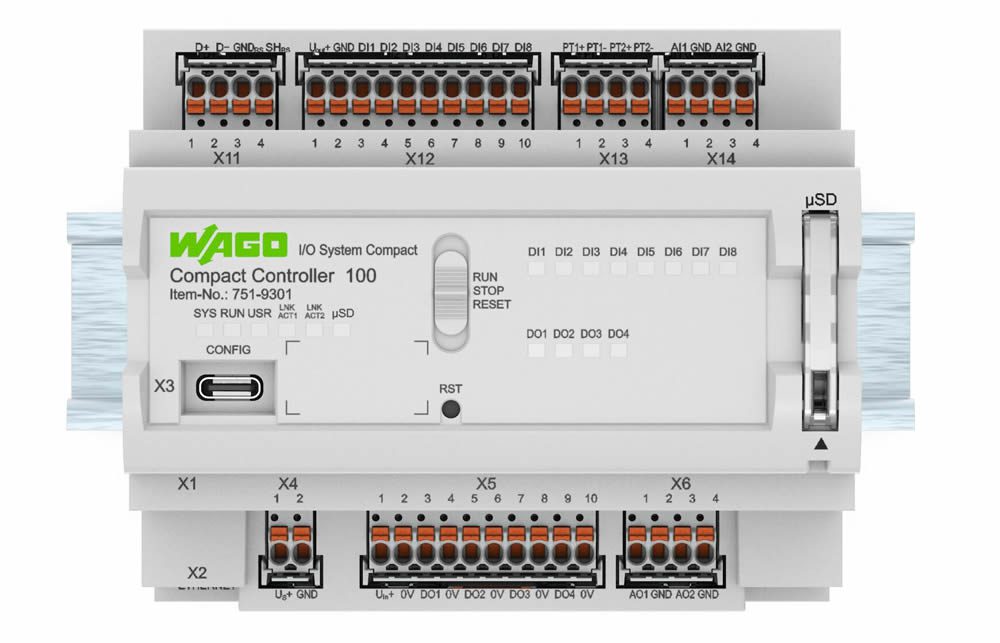The Benefits of Edge Computing
Smart factories are optimizing production methods and output with the help of automation edge controllers and sensors that collect, network, and evaluate data.

Networked, intelligent, self-controlling, self-optimizing, and resource-efficient production comprise the smart factory, the central scenario of the Industrial Internet of Things (IIoT) and Industry 4.0. Manufacturers are facing increasing materials, labor, and energy costs, as well as global competition. At the same time, increasing product quality, reducing waste, and conserving resources are a priority. To reach these goals and be competitive in the global economy, significant efforts are underway to reinforce production operations using a maximum level of automation.
Ideas for tomorrow’s production
The future success of production facilities will largely be determined by their capacity to adapt quickly to changes in volumes, products, and methods. Smart factories network to a high degree along the entire value chain, up to the final product. They can manufacture products according to a variable lot size without substantially increasing production costs. Using data collected via connected networks of sensors and controllers, artificial intelligence (AI) calibrates equipment functions — including diagnostics — for efficiency and integrates learning processes that continue to bring improvements. Smart connectivity brings application-specific, revenue-enhancing processes to production facilities. At the same time, the collection of data makes protection of proprietary information and security of equipment a high priority. Because of this, the smart factory cannot simply be seen as a bolt-on solution; it must be strategically integrated as a smart version of an existing production line.
Smart planning is the first step. Consideration must be given to every method in use as well as to future goals for the design of a more efficient approach and to improve an OEM’s processes. Understanding where improvements are needed and using data collection to identify where in the process they may be found leads to the more efficient use of material, labor, and energy resources. Smart networking of applications can also significantly shorten system engineering times.
Networking operations is a prerequisite in the transition from a facility’s original process to new smart factory methods. Networking equipment from the control system to the field level includes every step in the production chain. This IIoT approach consists of collecting, recording, digitizing, and linking data from the point of order to every step of the production process and supply chain.

Automation solutions, such as WAGO’s new Compact Controller 100, is a small-scale PLC engineered for OEMs, IIOT digitization projects, and building automation applications. Along with a powerful processor and MicroSD card slot, the CC100 has additional communication ports including a serial port for connection with numerous devices such as bar code readers and automatic scales.
Data transparency for the smart factory
Transparency across all production and system data is an important function of the smart factory. Only when the data is brought into context, suitably processed, and consolidated into actionable information can measures be introduced to improve the production process. For this to succeed, sensors must collect product and production data at the field level. These sensors may be designed into a connected system architecture or incorporated into the OEM’s end product. In addition to the collection of data, smart systems must bring that information securely and without error from the field level to a higher level, for example, an MES (manufacturing execution system) or the cloud. In many cases, the relatively high expense of transferring and storing data in the cloud means it does not make sense to have raw sensor data sent directly to higher level systems.
Automation edge controllers can provide a decisive contribution. These devices collect information from various field devices throughout a network to offer visibility and provide actionable data for decision-making at the machine level. Modular systems can be easily introduced to existing networks and provide flexibility to new designs. Edge controllers can handle a variety of different communication interfaces and fieldbuses can be used to collect data horizontally from devices independent of manufacturer via CANopen, PROFIBUS DP, EtherNet/IP, or Modbus-TCP, and can also manage the vertical information via MQTT and OPCUA protocols.
Some advanced edge controllers can be incorporated into already existing automation systems as scalable nodes and gateways, which can be retrofitted without having to interfere with the actual automation process; the data can then be aggregated into abridged information that is transmitted to a higher level, an MES or the cloud. In this framework, the advantages connected with a cloud link initially appear quite promising: cloud solutions are flexible, scalable, highly available, and provide the opportunity for centralized access.

Automation solutions, such as the WAGO-I/O-SYSTEM 750, are available for capturing and transferring data into a “Manufacturing Execution System” (MES) or product management system.
A new generation of industrial connectivity solutions are available now to help update and futureproof facilities’ automation capabilities. Industry 4.0 transformation can be realized by using networked maintenance, facilities, and production technologies, together with machine learning, to achieve fully autonomous factories.
To learn more about smart factory solutions, visit WAGO.
Subscribe to our weekly e-newsletters, follow us on LinkedIn, Twitter, and Facebook, and check out our eBook archives for more applicable, expert-informed connectivity content.





